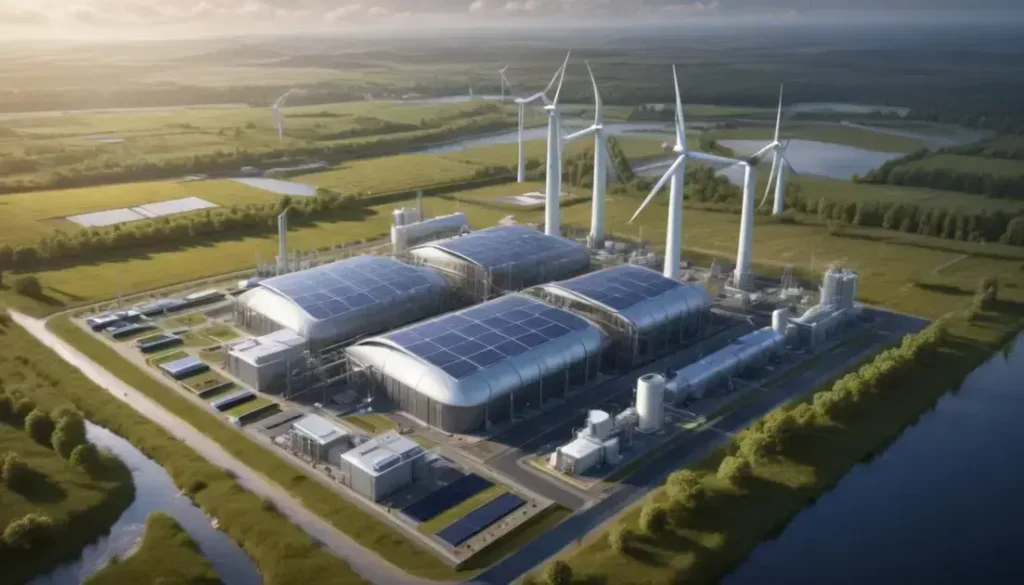The Greater Changhua 2 project is a pivotal offshore wind initiative in Taiwan that offers Canadian businesses opportunities for collaboration, investment, and technology exchange in the growing renewable energy sector.
The recent financing pull by Ørsted for the offshore wind project in Taiwan underscores a pivotal shift in energy investments that could resonate across the globe, particularly in Canada. What does this mean for Canadian businesses?
Understanding the significance of the Greater Changhua 2 project and its implications for Canadian businesses.
The Greater Changhua 2 project represents a significant leap in offshore wind energy, further establishing Taiwan as a leader in renewable energy. This project is pivotal, as it not only contributes to Taiwan’s sustainability goals but also enhances global energy partnerships.
For Canadian businesses, understanding these developments is crucial. Engaging with the offshore wind sector can open avenues for collaboration, investment, and technology exchange. The project’s scale and ambition offer insights into potential export opportunities for Canadian firms specializing in technology, engineering, and environmental solutions.
Moreover, as the demand for clean energy sources rises globally, Canadian companies can leverage their expertise to participate in international supply chains. The cross-border opportunities emerging from Taiwan’s initiatives could foster strong business ties, emphasizing the need for compliance with environmental regulations and innovation.
In this context, enhanced knowledge transfer between Taiwanese and Canadian entities may lead to the creation of new standards and operational excellence. By aligning with Taiwan’s ambitious renewable energy targets, Canadian businesses can not only thrive but also contribute significantly to the global transition towards low-carbon energy solutions.
In summary, the impact of the Greater Changhua 2 project
As we have seen, the Greater Changhua 2 project is more than just an initiative for Taiwan; it is a significant opportunity for Canadian businesses. The global shift towards renewable energy opens new doors for collaboration and investment.
Canadian companies can benefit from the insights and technology exchanges stemming from this project. By engaging with Taiwanese renewable energy developments, they can enhance their market competitiveness and contribute to global sustainability efforts.
The potential for cross-border partnerships is vital as both regions work towards reducing carbon footprints. Embracing these opportunities could lead Canadian businesses to mutual growth and innovation in the green energy sector.
Ultimately, understanding and participating in such initiatives will empower Canadian businesses to thrive in an increasingly interconnected and sustainable world.
Frequently Asked Questions
What is the Greater Changhua 2 project?
The Greater Changhua 2 project is an offshore wind energy initiative in Taiwan aimed at boosting renewable energy capacity and promoting sustainability.
How can Canadian businesses benefit from the project?
Canadian businesses can tap into opportunities for collaboration, technology exchange, and investment as Taiwan leads in the offshore wind sector.
What are the implications of the project for renewable energy in Canada?
The project’s success can serve as a model for Canada’s own renewable energy initiatives, fostering innovation and cross-border partnerships.
What types of companies can engage with the offshore wind sector?
Companies specializing in engineering, technology, and environmental solutions can find significant opportunities in the offshore wind energy market.
How is the Canadian government supporting renewable energy efforts?
The Canadian government is investing in clean energy technologies and creating policies that encourage sustainable practices and renewable energy production.
Is there potential for job creation in the renewable energy sector?
Yes, as the sector grows, it can create new jobs in engineering, construction, and maintenance of renewable energy systems.


